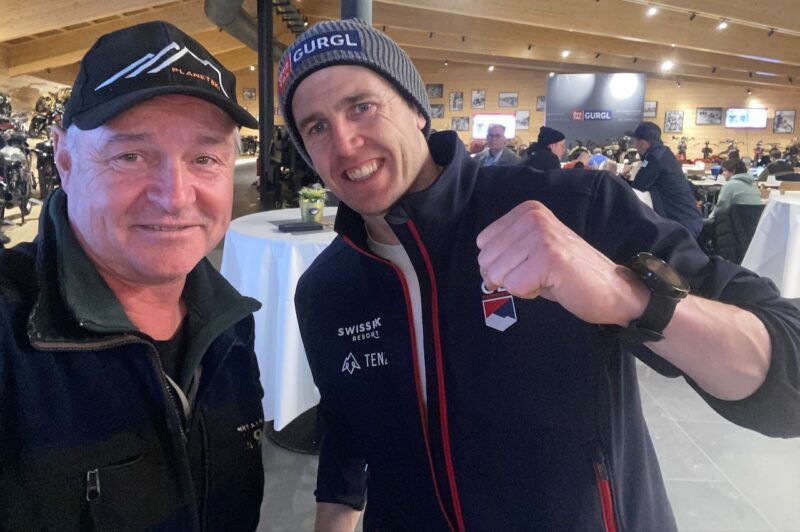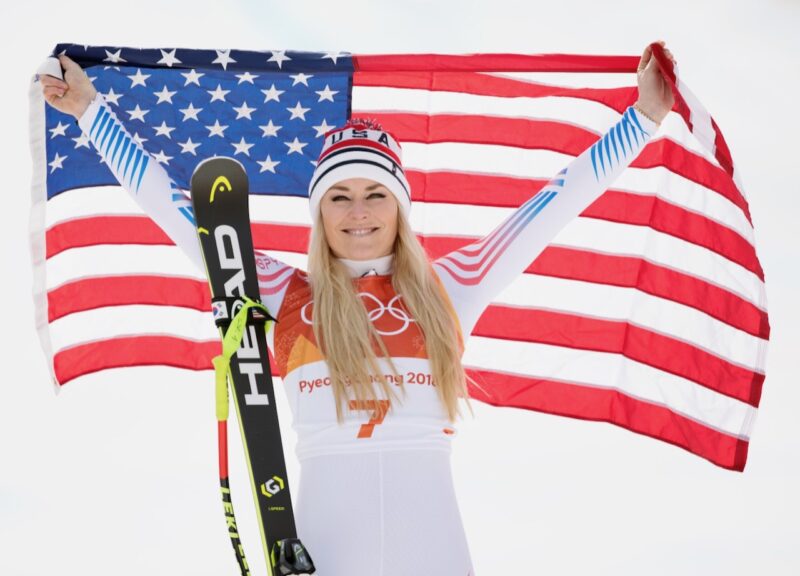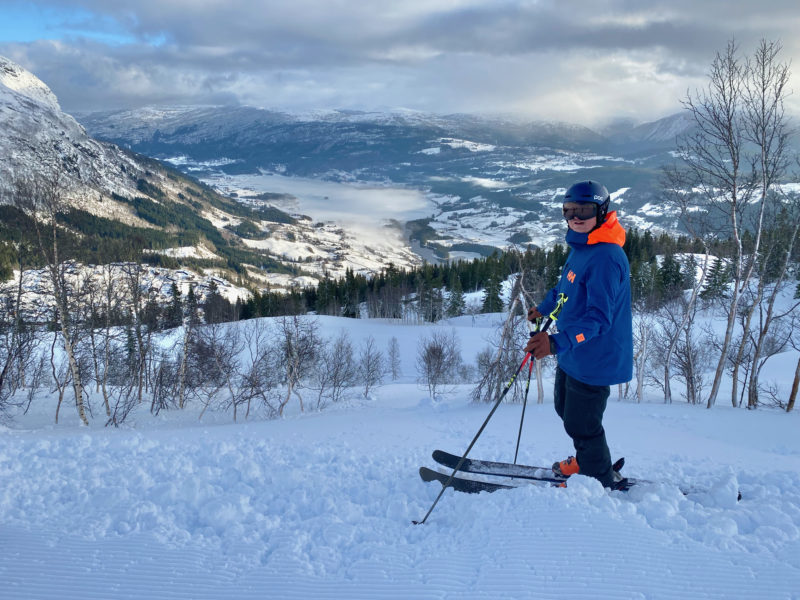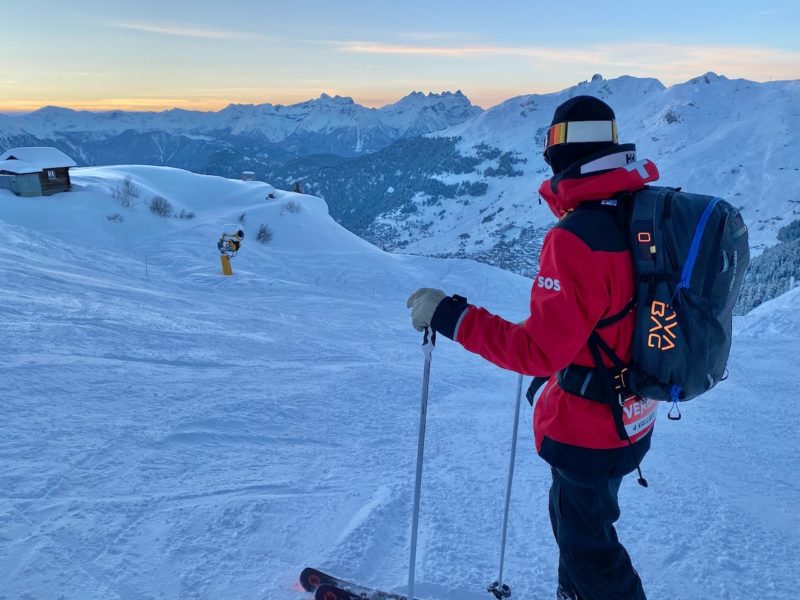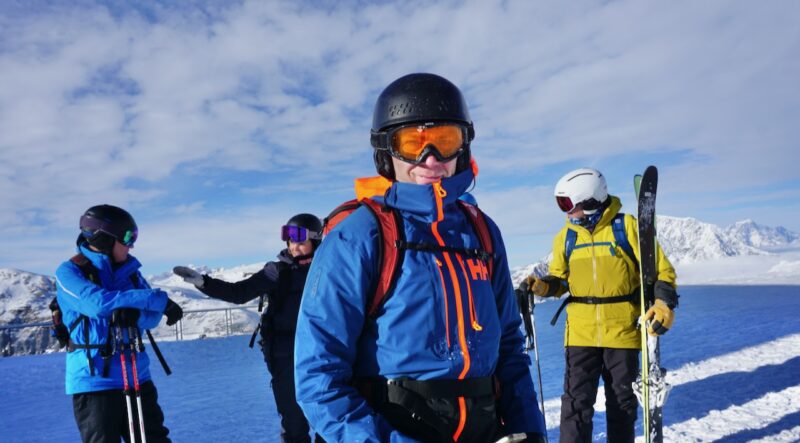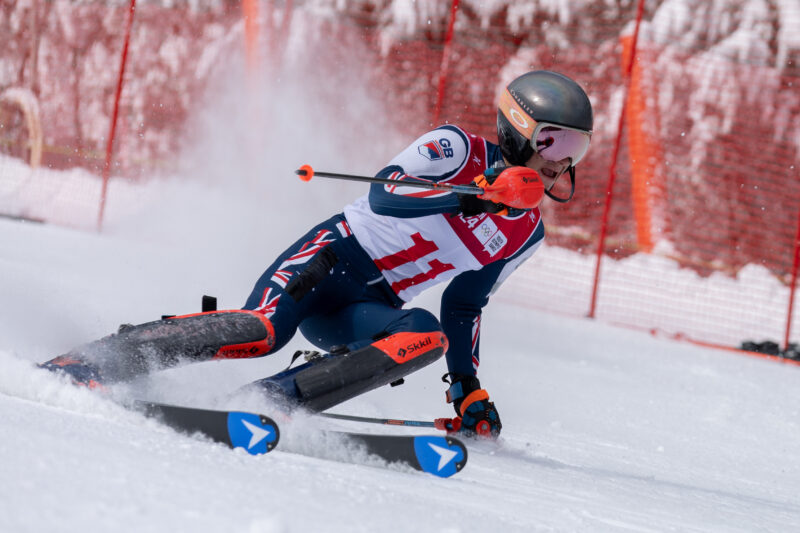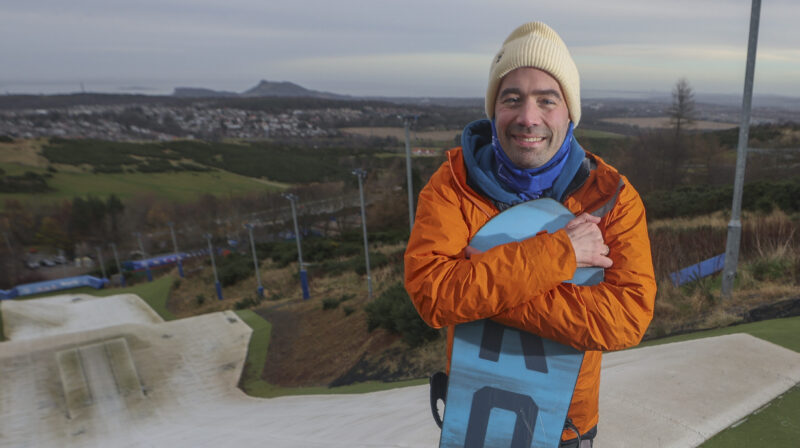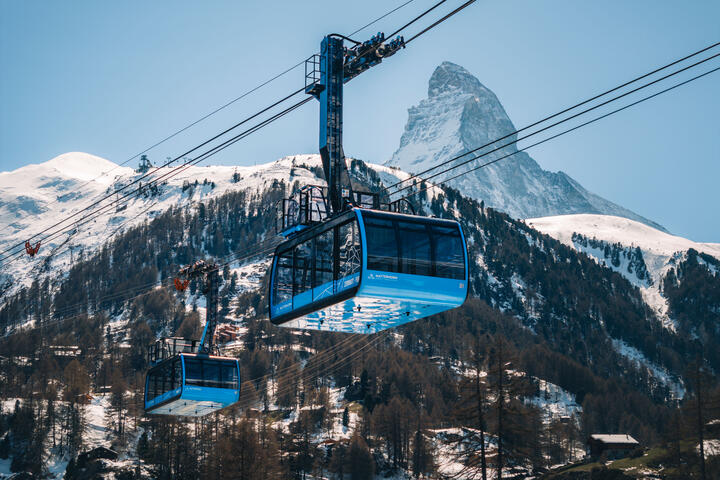City & Ski on PlanetSKI’s French Road Trip
3rd April 2022 | Jane Peel, Grenoble & Chamrousse
Last modified on April 7th, 2022
PlanetSKI is on the last stage of a mini road trip visiting three lesser-known ski areas in the Isère region of France. We’re combining a bit of sightseeing in the region’s capital, Grenoble, with skiing in the city’s local resort, Chamrousse.
Think of Isère and you’ll probably think of the well-known ski areas of Alpe d’Huez and Les 2 Alpes.
There are, though, 22 ski resorts in the region and several are a relatively short drive from Grenoble.
So far on our road trip, we’ve been to two of them, Villard de Lans and Les 7 Laux.
- PlanetSKI’s French Road Trip – Part One, Villard de Lans
- Fear & Fun on PlanetSKI’s French Road Trip – Part Two, Les 7 Laux
Now we’re heading to the 1968 Winter Olympics alpine centre, Chamrousse in the Belledonne mountain range.
It’s 30km from the city and around 45 minutes’ drive.
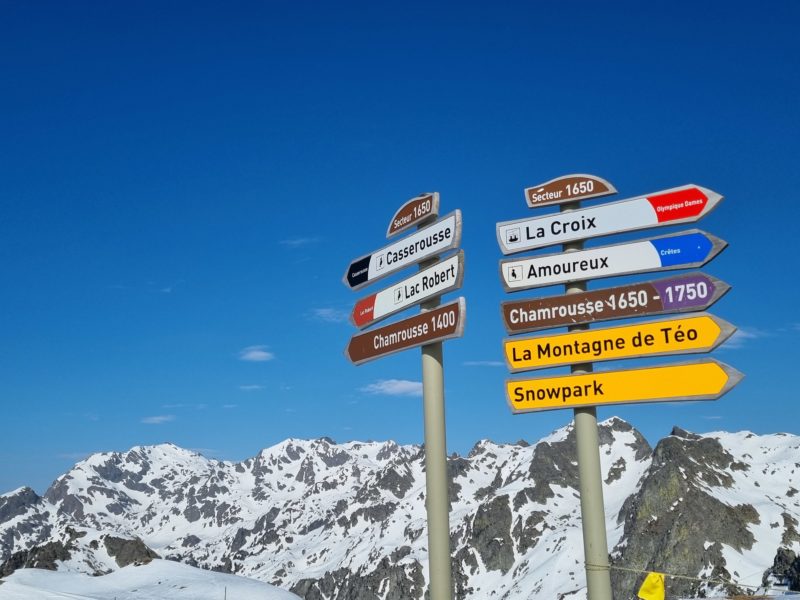
Chamrousse – photo © PlanetSKI
Grenoble
But first, the city itself.
All too often our only experience of a city on our way to the mountains is its airport.
How many times have you flown into Geneva, Zurich, Innsbruck, Salzburg, Turin, Verona or Chambery for a ski or snowboard holiday?
And how many times have you stopped off to enjoy the sights of the city?
All the cities I’ve mentioned have their merits, but so does Grenoble.
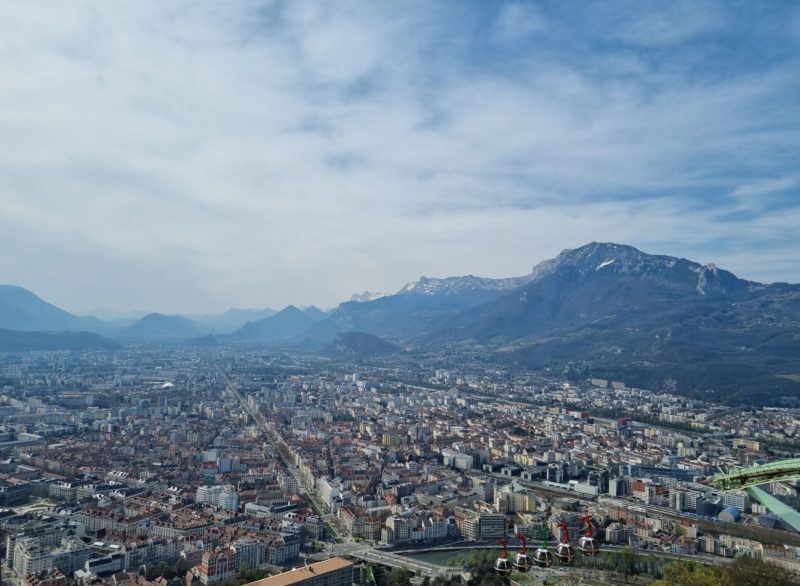
Grenoble – photo © PlanetSKI
It is known as the capital of the French Alps and is the capital of the Isère region.
The metropolitan area has a population of 450,000.
It is probably one of the flattest cities in the mountains, sprawling across the valley between three different mountain ranges.
The best way to appreciate its location is to take a 5-minute ride in the cable car over the Isère river up to the 19th Century fortress, the Bastille.
It was built to defend Grenoble from invaders from the Savoie which, at the time, was not part of the French kingdom.
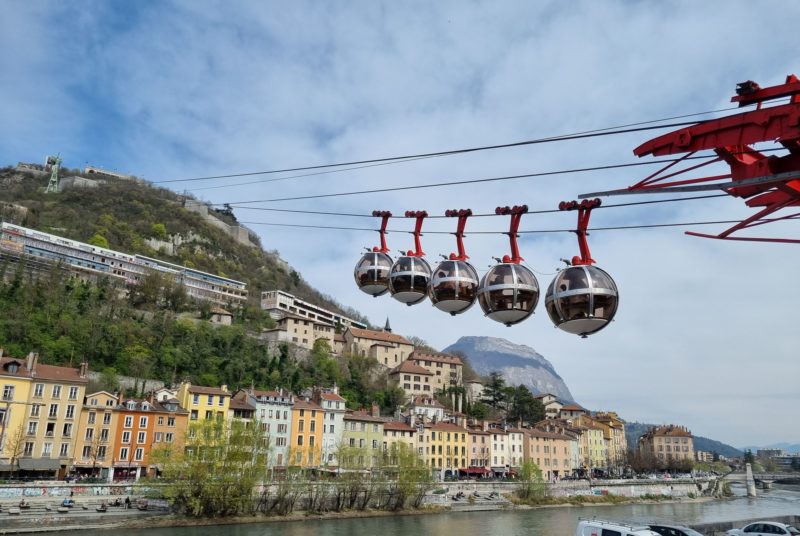
Grenoble cable car – photo © PlanetSKI
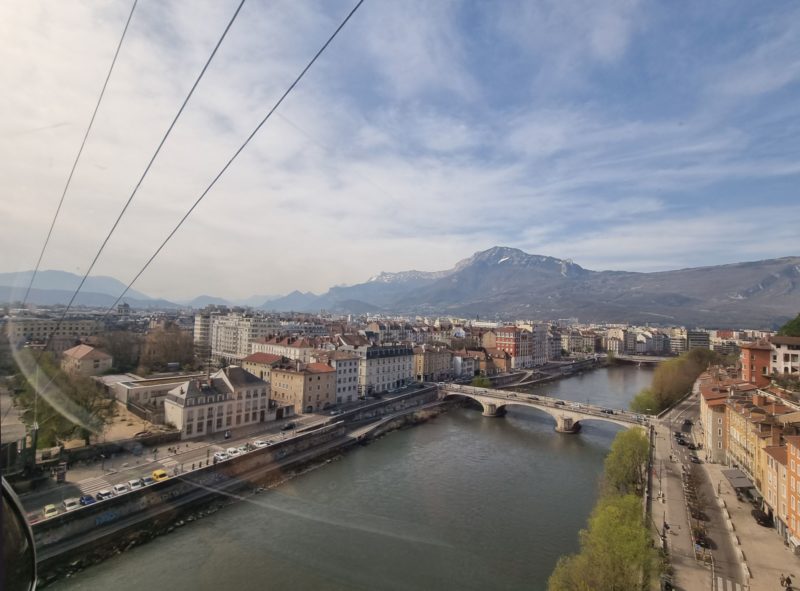
View from the Grenoble cable car – photo © PlanetSKI
https://www.facebook.com/planetski/videos/277213061276778/
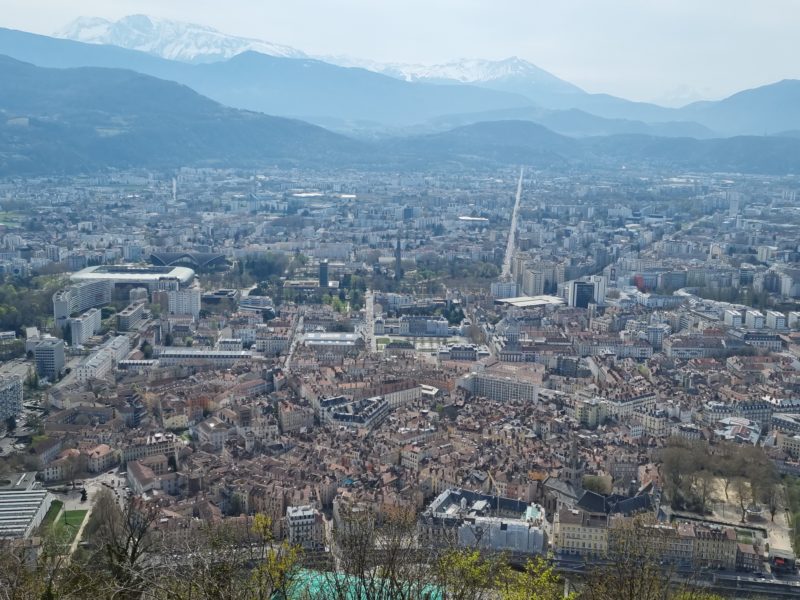
Grenoble – photo © PlanetSKI

Grenoble – photo © PlanetSKI
The city has more than 2,000 years of history.
It was founded by Celts and the Romans arrived and settled in 43 BC.
At the end of the 3rd Century, they built a wall to protect the city from barbarians and floods.
There are a few places where you can see its remains, though they’re easy to miss unless someone points them out to you.

Remains of the Roman wall, Grenoble – photo © PlanetSKI
Grenoble played a significant part in more recent history.
It is considered by many to be the birthplace of the French Revolution.
On 7th June 1788, a year before the revolution officially began, there were riots and assemblies in the city.
It became known as La Journée des Tuiles (The Day of the Tiles) after locals climbed on the roofs and threw roof tiles onto soldiers in the streets below.
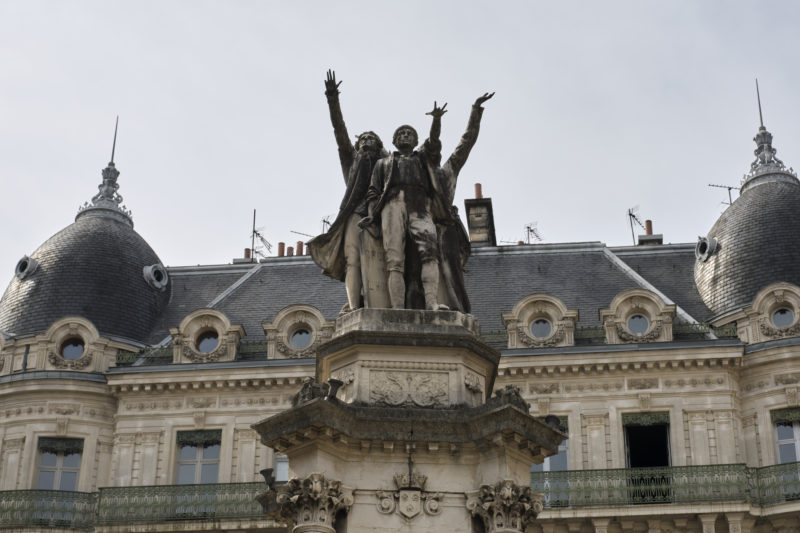
Statue commemorating Grenoble’s part in the French Revolution – photo © PlanetSKI
It’s also one of just five cities or towns in France to be awarded the Croix de l’Ordre de la Liberation.
This rare honour is for Grenoble’s heroic efforts to resist the Nazis in the Second World War and contribute to the liberation of France.
You can learn more about Grenoble’s role in WW2 in the Resistance & Deportation Museum, one of many museums and cultural centres we sadly had no time to visit.
Moving on to more mundane matters…
Food.
Grenoble is a foodie’s delight.
In the late March warmth we enjoyed on our visit it was a great place to enjoy an outdoor drink or meal and even some entertainment.
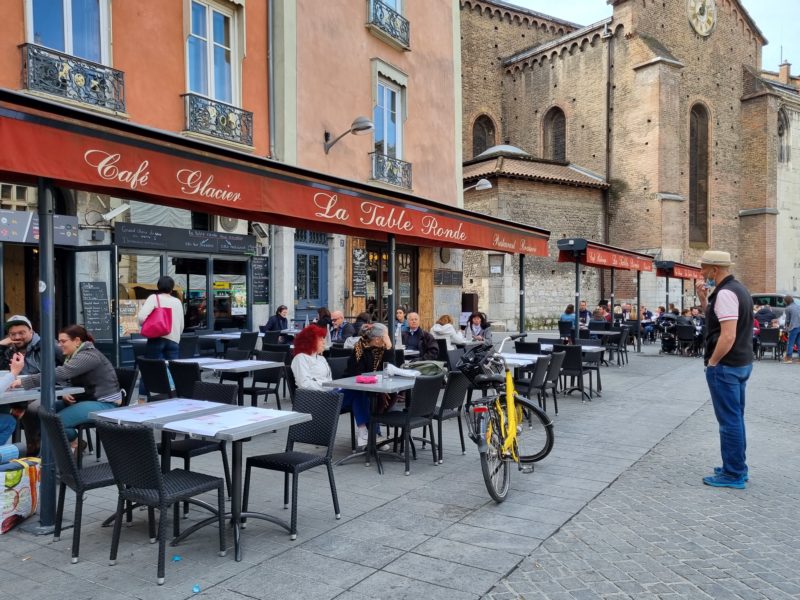
The café said to be the second oldest in France, Grenoble – photo © PlanetSKI
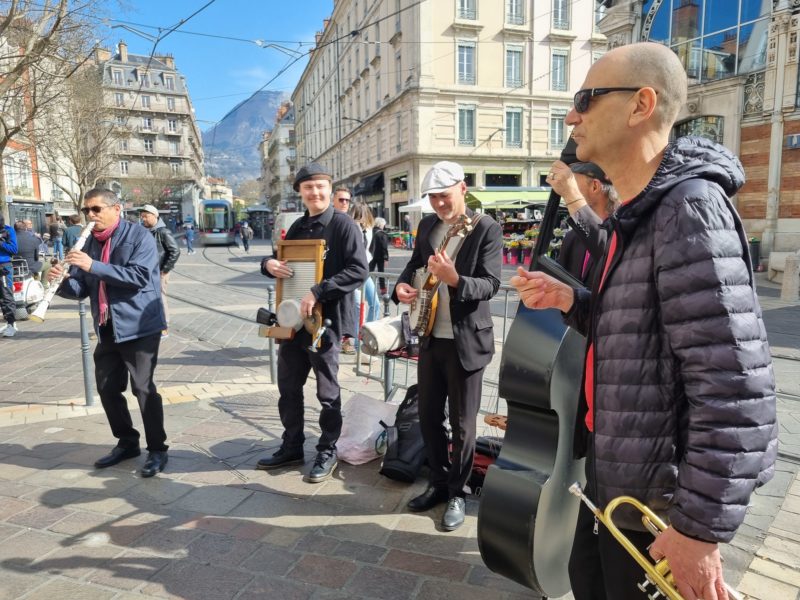
Street entertainment, Grenoble – photo © PlanetSKI
Locals flock to the mouth-watering and well-stocked indoor food market at Les Halles Sainte-Claire.
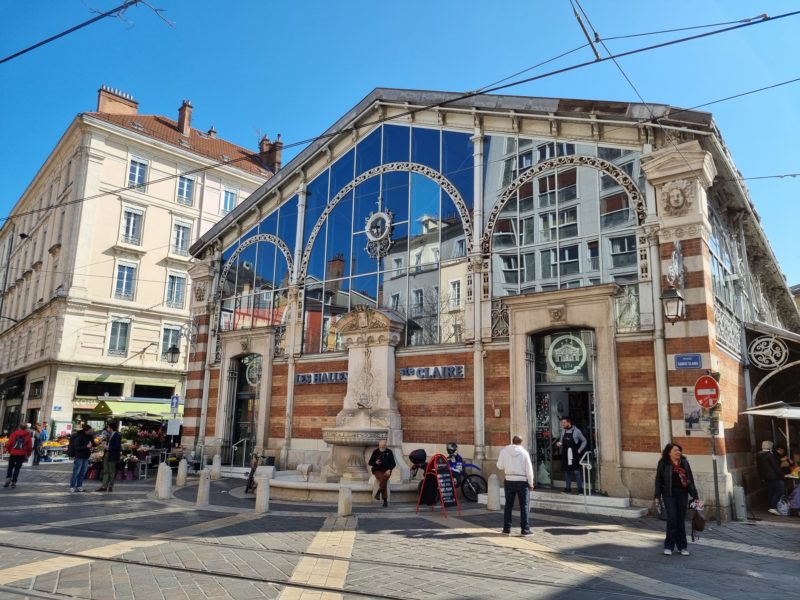
Indoor Food Market, Grenoble – photo © PlanetSKI
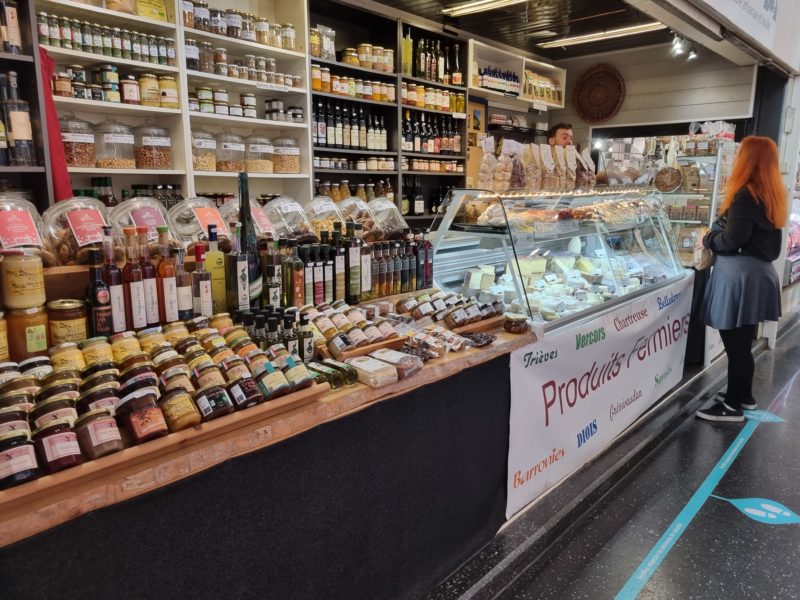
Indoor food market, Grenoble – photo © PlanetSKI
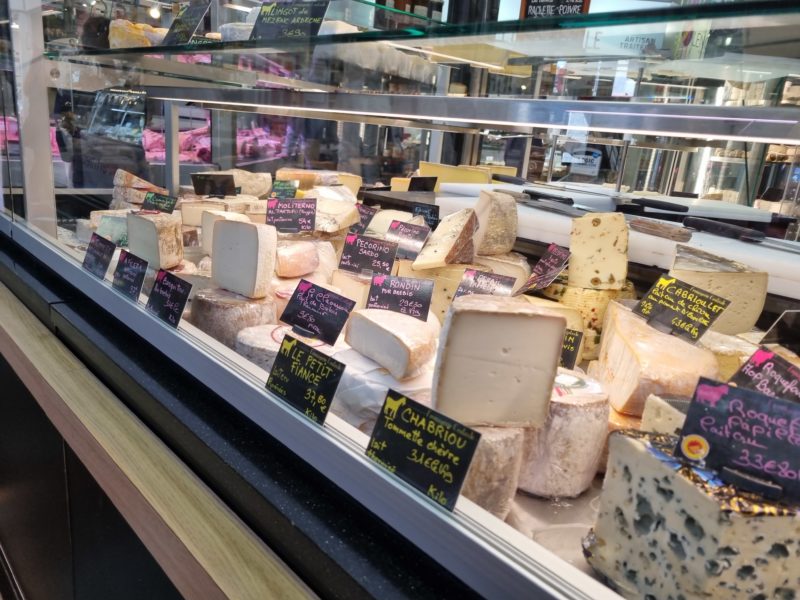
Indoor food market, Grenoble – photo © PlanetSKI
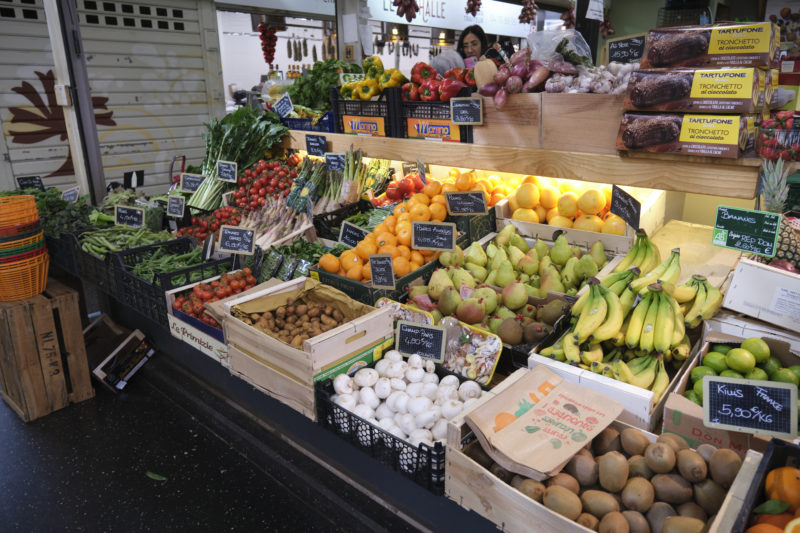
Indoor Food Market, Grenoble – photo © PlanetSKI
But our top tip for food goes to our two-course brunch at Cafe Myrö.

Eggs Benedict, brunch course one, Cafe Myrö, Grenoble – photo © PlanetSKI

Pancakes, brunch course two, Cafe Myrö, Grenoble – photo © PlanetSKI
No need to eat anything else for the rest of the day.
Of course, one of Grenoble’s biggest draws for a skier or snowboarder is its proximity to ski areas.
The two we visited first on our road trip are both easily accessible by car from the city.
But Chamrousse is Grenoble’s local resort.
Chamrousse
The resort is at the far south of the Belledonne mountain range.
There are several theories to how it got its name – which translates to ‘red field’.
Our guide told us it came from the local rhododendron and wild blueberry bushes that turn a deep shade of orange in the autumn.
The resort has 90 km of pistes ranging from 1,400 metres up to 2,250m.
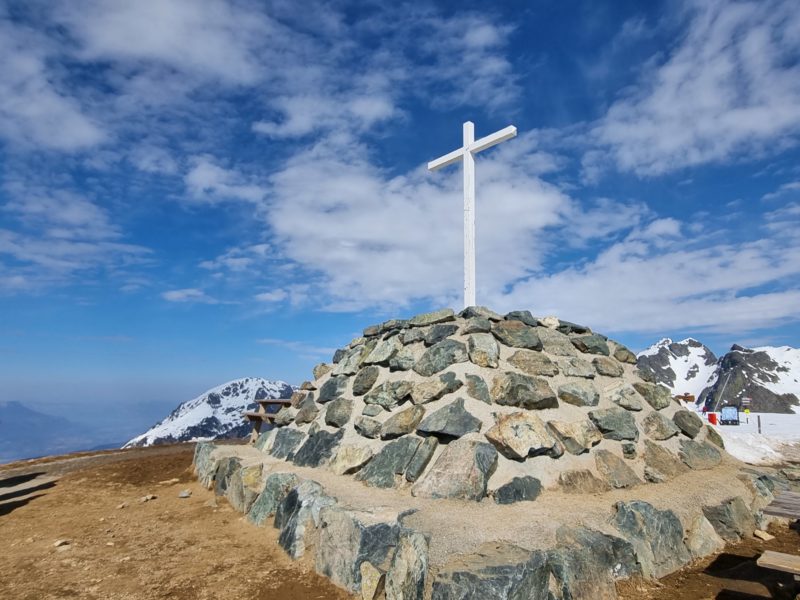
At the top, Chamrousse 2250m – photo © PlanetSKI
There are three village bases, linked by lifts with a big area for beginners at Chamrousse 1700.
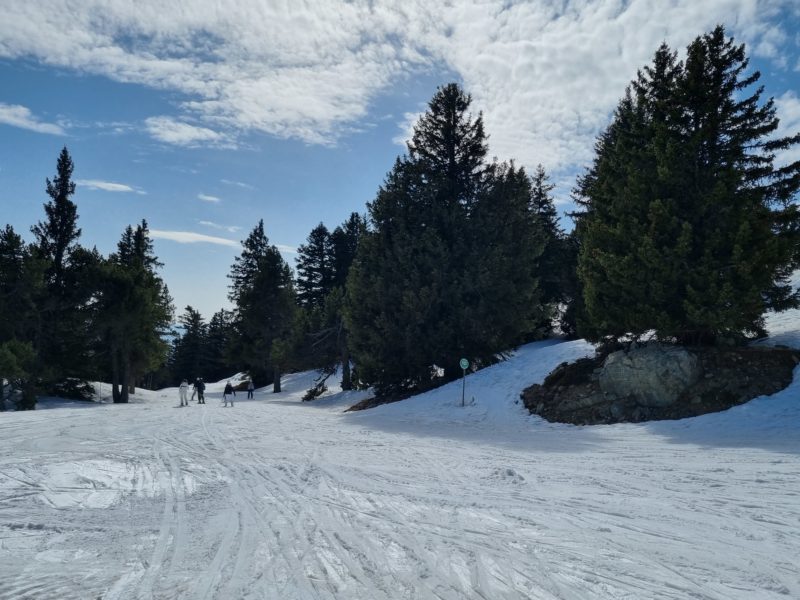
Beginner area, Chamrousse – photo © PlanetSKI
The slopes get progressively more difficult as you work your way over to the left of the piste map.
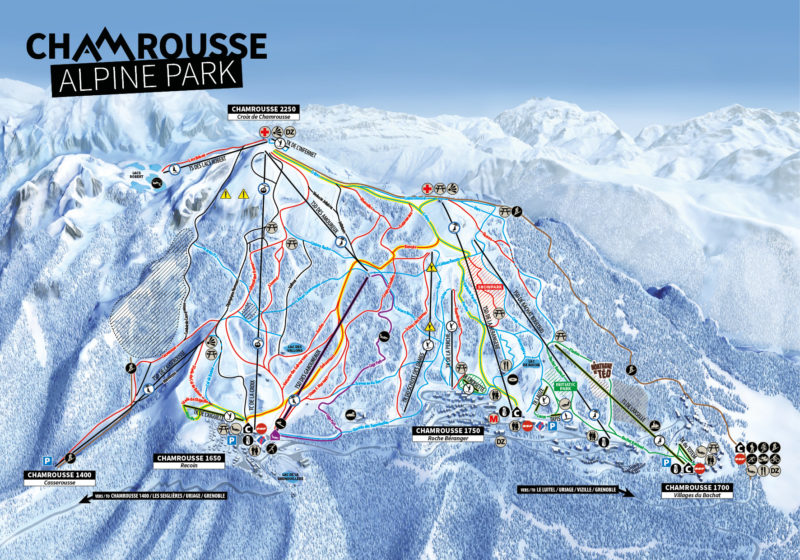
Chamrousse Piste Map
Most slopes face south and west and it benefits from a lot of sun.
When we visit, the temperatures have risen and some of the slopes that were white a few days earlier are now bare.
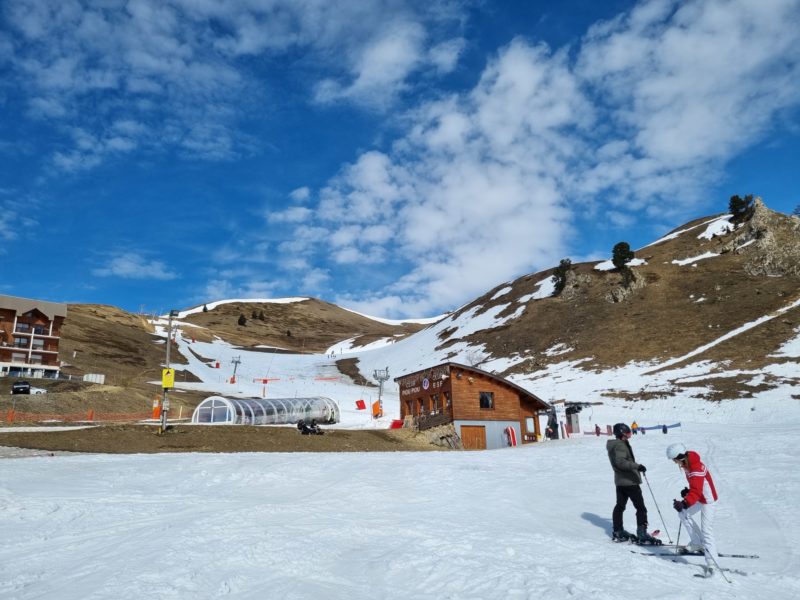
Chamrousse – photo © PlanetSKI
It’s very popular at weekends as it’s so close to Grenoble.
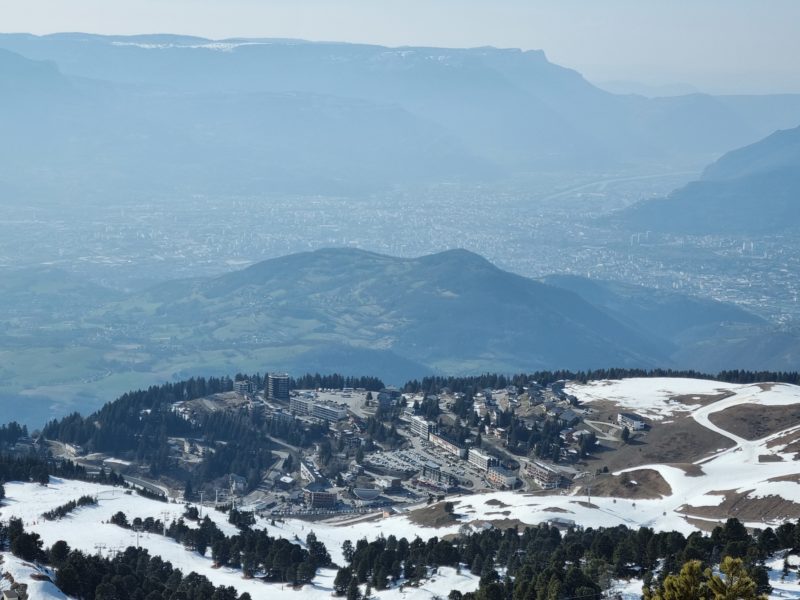
Looking down on Chamrousse 1650 with Grenoble in the distance – photo © PlanetSKI
Even so, it wasn’t busy on the Saturday we visited in late March once we moved away from the blues and on to the red runs and there were no queues for lifts.
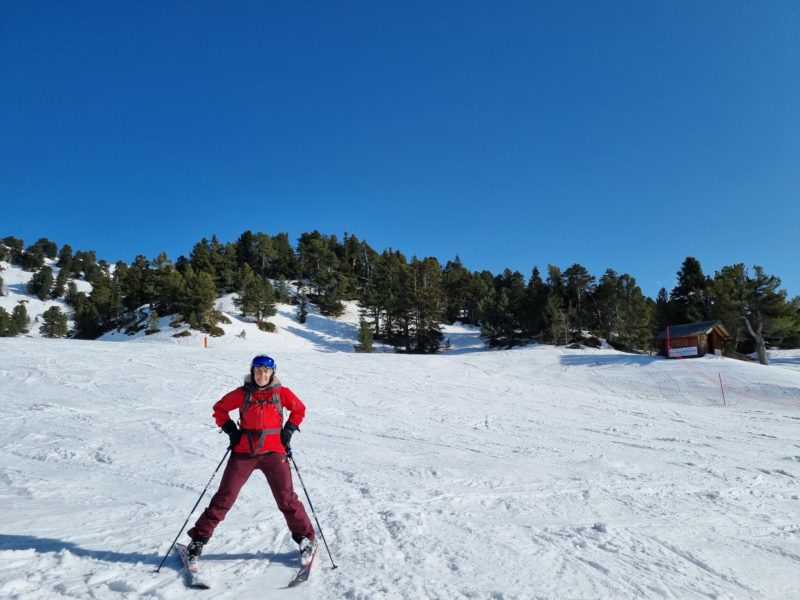
Jane enjoying the quiet runs – photo © PlanetSKI
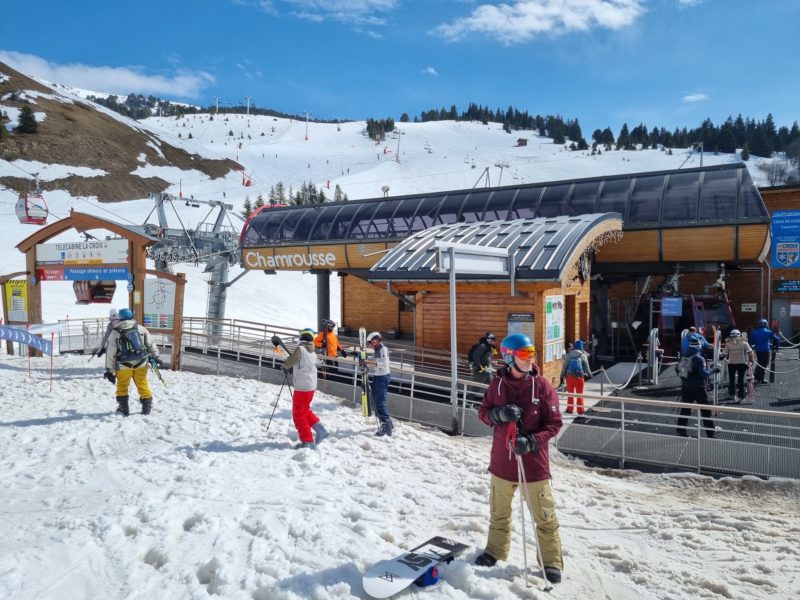
No queues at the gondola in Chamrousse – photo © PlanetSKI
Every Saturday (and Sundays during the French holidays), a few of the lifts stay open until 8.30pm for floodlight skiing on the two main runs.
There’s also a night luge park.
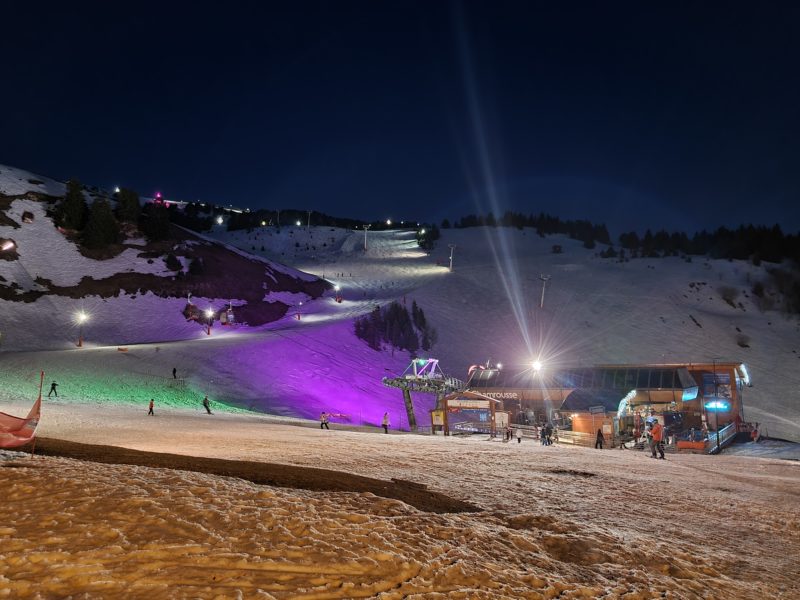
Night skiing in Chamrousse – photo © PlanetSKI
For those of you with long memories, you may know Chamrousse as the location of one of the greatest performances in ski racing history.
The resort hosted all the alpine events at the 1968 Grenoble Olympics.
They were memorable for the three victories of the great French ski racer, Jean-Claude Killy.
A good excuse to end our report from Grenoble & Chamrousse reliving those gold medals, courtesy of the Olympic Channel.
FACT BOX
More info – Visit the websites of Grenoble, Chamrousse & Isère Tourism
Flights – Return direct flights from London Heathrow to Lyon Airport cost from £60 with British Airways
Car Hire – Five-day car hire from Lyon Airport starts from £152 with Sixt
Accommodation – One night stay at the Okko Hotel, Grenoble is priced from £32/€39pp with breakfast, based on two sharing.
Chamrousse Lift pass – A one-day adult lift pass for Chamrousse is priced from €36.50/£30.16. A full price list for lift passes can be found at here.
Food – PlanetSKI ate at:

